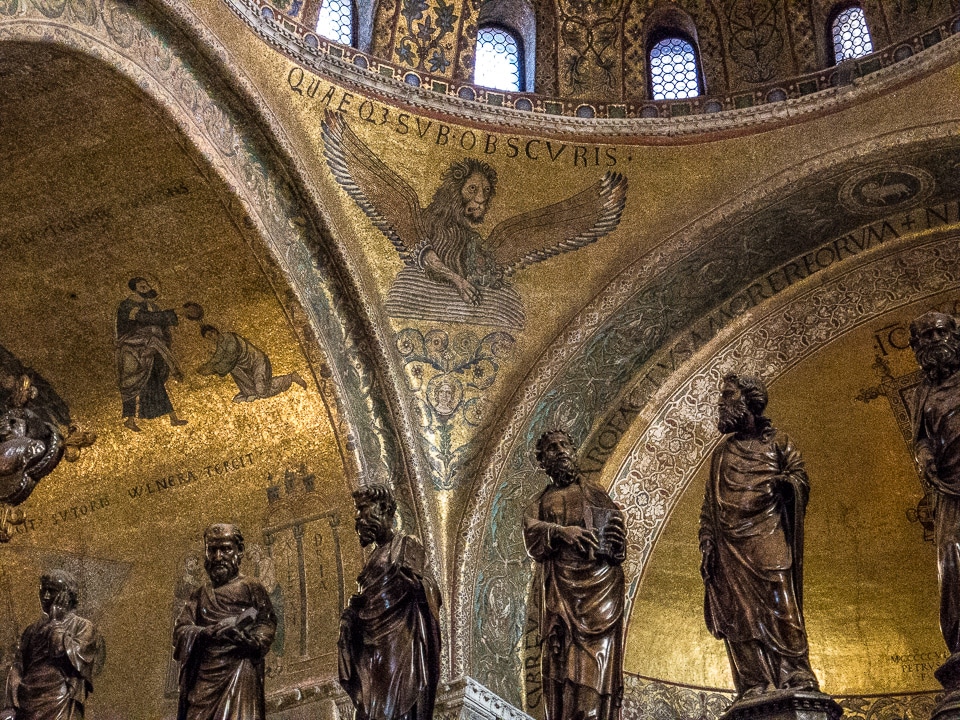 The winged lion is the symbol of both Saint Mark the Evangelist and the city of Venice. You see it pretty much everywhere. There is some dispute of the origin of the iconography, but some say the lion comes from the Book of Revelation where four animals surround the throne of God. The four were later conflated with the four evangelists, Matthew, Luke, John, and here, Mark. Again, according to legend, the evangelist Mark visited Venice and it was revealed to him that he'd be buried there.
The winged lion is the symbol of both Saint Mark the Evangelist and the city of Venice. You see it pretty much everywhere. There is some dispute of the origin of the iconography, but some say the lion comes from the Book of Revelation where four animals surround the throne of God. The four were later conflated with the four evangelists, Matthew, Luke, John, and here, Mark. Again, according to legend, the evangelist Mark visited Venice and it was revealed to him that he'd be buried there.
In this case, the Lion seems to be rising out of the waves, which also symbolizes Venice's domination of the sea.
And that's the story of how we came to have San Marco Basilica in Venice.
As they say, you can look it up.
This is only a small fraction of the two acres of golden mosaics in the San Marco Basilica of Venice. It's a marvel of the Byzantine art, and a testament not only to the skill of the artists but also to the wealth of Venice. That's real gold up there in all those tiny blocks of glass.
And, because one of our readers asked about the quote above the lion: It's part of a much longer quote. (And I had to look it up on a site which has all the quotes that run all over San Marco.) In its entirety: quaeq(ue) sub obscuris de cristo dicta figuris his aperire datur et in his deus ipse notatur. “That which was said about Christ in an obscure way will be revealed in these figures and God himself will be apparent.” That's my translation and perhaps is not the most literal, but pretty sure that's what it means. A little further research and this seems to be a reference to the book of Ezekiel, where he talks about four winged animals appearing, (one is a lion) and it's inferred he's talking about the four evangelists of the New Testament. The lion is the symbol of St. Mark, and this is his basilica, and allegedly he's buried under the altar. The other three figures, representing John, Luke, and Matthew flank this one.
Up Your Travel Skills
Looking to book your next trip? Use these resources that are tried and tested by us. First, to get our best travel tips, sign up for our email newsletter. Then, be sure to start your reading with our Resources Page where we highlight all the great travel companies and products that we trust. Travel Accessories: Check out our list of all the accessories we carry to make getting there and being there a lot easier. Credit Cards: See our detailed post on how to choose the right travel rewards credit card for you. Flights: Start finding the very best flight deals by subscribing to Thrifty Traveler. Book your Hotel: Find the best prices on hotels with Booking.com. See all of the gear and books we like in one place on our Amazon shop.Got a comment on this post? Join the conversation on Facebook, Instagram, or Threads and share your thoughts!


Comments are closed.